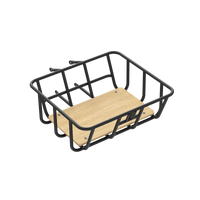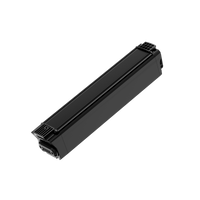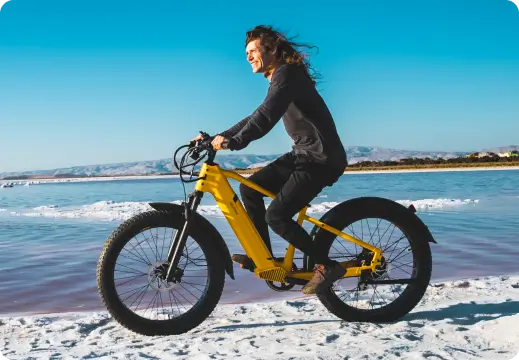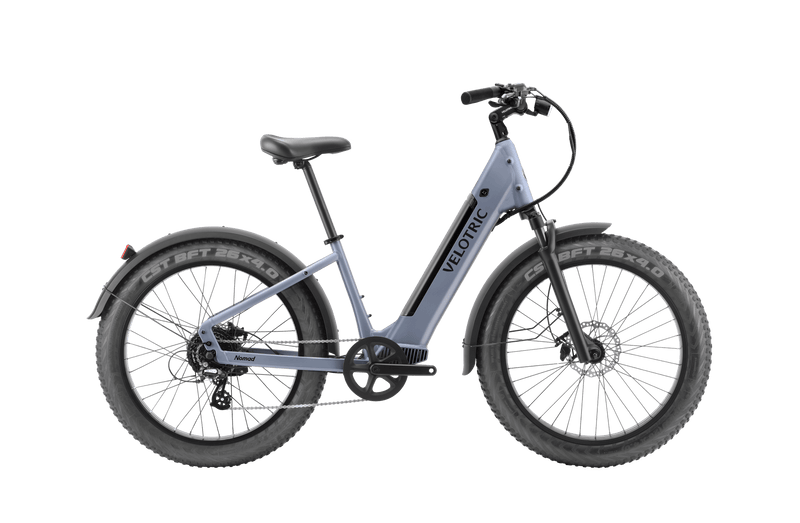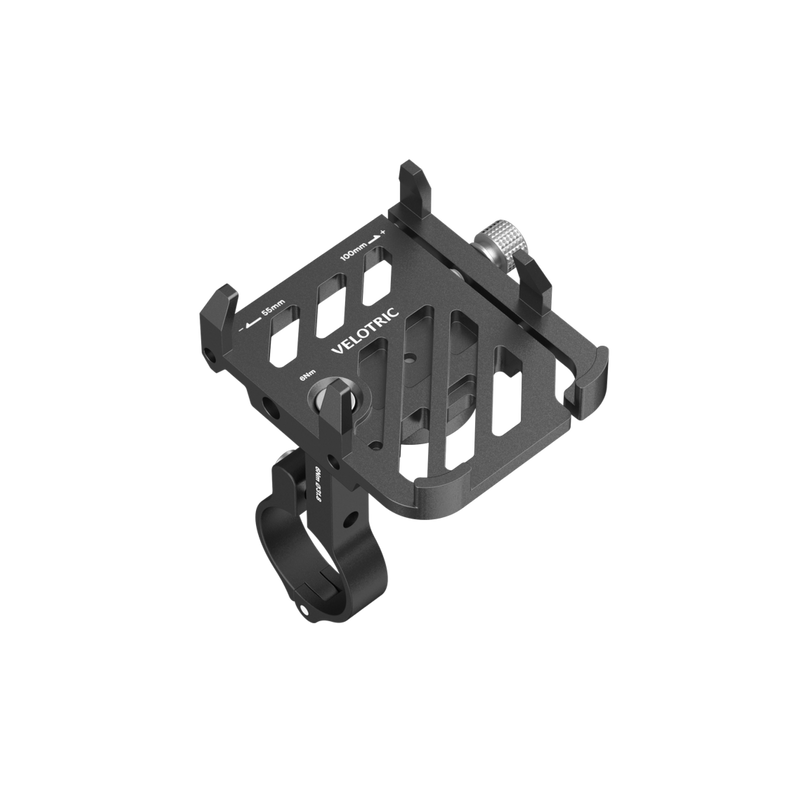Looking to be safer out on the road? We have the tips and tricks to help you stay safe and prevent injury while riding your electric bike.
Cycling is an incredible way to stay fit and enjoy the outdoors. It’s not only a great cardio workout, but it also helps to tone and strengthen muscles all over your body. However, with any physical activity, there’s always a risk of injury.
Here are some specific ways to prevent injury while cycling:
Always Wear a Helmet
Wearing a helmet is one of the most important things you can do to prevent head injuries when cycling. Wearing a helmet can reduce the risk of head injury by up to 85%.
Head injuries can be hazardous when cycling, even at low speeds. In an accident, your head could hit the pavement, a curb, or any other hard surface. A helmet can help absorb the impact and protect your brain from injury.
Approximately 33% of bicyclist injuries that are not fatal occur in the head area. The majority of the 80,000 head injuries related to cycling that require emergency room treatment every year are, in fact, brain injuries.
Although children and teenagers are most likely to suffer head injuries while cycling, adults are still at risk. Head injuries are not always instantly apparent; some concussions, for example, can be hard to spot.
Wearing a helmet can also help prevent serious long-term consequences of head injuries such as memory loss, speech impairment, or permanent brain damage. Remember: Wearing a helmet doesn’t guarantee that you won’t suffer a head injury, but it does significantly reduce the risk of injury.
Warm Up Before Heading Out
Warming up before cycling is essential to prevent injury and ensure an enjoyable ride. A solid warm-up routine helps to increase blood flow to the muscles, improve flexibility, and reduce the risk of muscle strains, cramps, neck pain, lower back pain, knee pain, and other injuries. Warming up before exercises could help prevent injuries, especially in the case of skeletal muscles (which make up over 30 percent of injuries).
Most cycling injuries are related to the lower back, neck, knees, and hands. These injuries can be caused by overuse, lack of flexibility, and poor posture. A proper warm-up routine can help to address these issues and prepare your body for the physical demands of cycling.
A warm-up routine should include dynamic stretching exercises that target the muscles used when riding a bike, such as the quadriceps, hamstrings, calves, and glutes. A top-tier warm-up will also include light cardio exercises to increase your heart rate and blood flow to the muscles. This can include jogging in place, jumping jacks, or a few minutes of easy cycling.
Warming up before cycling reduces the risk of injuries and improves overall performance — a win/win! With practice and consistency, you’ll ride longer, harder, and with more ease. Additionally, warming up can help to reduce muscle soreness and fatigue after the ride. That sounds a lot more fun to us!
Warming up isn’t only for professional athletes or experienced cyclists. Anyone who rides a bike, whether for leisure, fitness, winning the Tour de France, or commuting, can benefit from a good warm-up routine.
Adjust Your Bike Properly
Adjusting your bike correctly before riding is crucial for preventing injuries and ensuring a comfortable and safe ride. A suboptimal bike fit can cause pain, discomfort, and even serious injuries, such as back pain, knee pain, and nerve damage. A well-fitted bike, on the other hand, can help improve your performance, prevent injuries, and make your ride feel way more awesome.
Every part of your bike matters, but pay special attention to the saddle height, saddle position, handlebar height, and cleat position (if you use clip-in pedals). These adjustments can help to optimize your body's position on the bike, reduce strain on your joints, and improve your pedaling efficiency. You wouldn’t want to work at a desk or chair that doesn’t fit your body — the same goes for your electric ride.
Saddle Height and Position
One of the most VIP adjustments is the saddle height. The proper saddle height will allow you to pedal with maximum power and efficiency and minimize the risk of knee injuries.
To determine your precise saddle height, stand next to your bike and adjust the saddle so that it's at hip level. Then, sit on the bike and place your feet on the pedals. Your leg should be almost fully extended at the bottom of the pedal stroke, with a slight bend in the knee.
The saddle position is another critical adjustment. Is your weight balanced between the front and rear wheels? Congrats! You’ve nailed it.
Why this matters: A saddle that's too far forward can cause knee pain, while a saddle that's too far back can cause lower back pain. Yikes.
Handlebar Height
Handlebar height also factors into a comfortable and safe ride. The handlebars should be adjusted so you ride with a slightly bent elbow and a relaxed grip: This can reduce strain on your shoulders, neck, and upper back. A set of Handlebar Grips (compatible with the Discover 1) wouldn’t hurt either, by the way.
If you're not comfortable making these adjustments yourself, consider taking your bike to a professional bike fitter who can help you achieve the optimal fit. When you buy your bike from a dealer, they can also give you the thumbs up on whether or not you’ve got the right fit.
Just like you check the size of a pair of shoes before you buy them, check the size of your eBike, too.
Stay Hydrated
Drinking enough water while riding a bike is essential for preventing injury and ensuring optimal performance. Dehydration can lead to several bummers, including fatigue, dizziness, and muscle cramps. It may also impair your ability to focus and react quickly, possibly increasing the risk of accidents.
When cycling, your body is working hard to maintain your speed and endurance. Sweating worsens dehydration if you're not drinking enough fluids. Even mild dehydration can hurt performance and increase the risk of injuries.
How Much Water To Drink While Cycling?
To prevent dehydration, drinking fluids before, during, and after your ride is essential. The fluid a person needs depends on several factors, including body size, the intensity of the ride, and the temperature and humidity of the environment.
As a general guideline, aim to drink around seven to ten ounces of water every 20 minutes or so while exercising. This number can change based on the weather, workout intensity, and individual, though.
In addition to water, low-sugar sports drinks or electrolyte-enhanced beverages can help replace the sodium, potassium, and other minerals lost through sweat. These drinks can also help to maintain your energy levels and reduce muscle fatigue.
Start your ride well-hydrated. Drinking fluids in the hours before your ride (17 to 20 ounces two to three hours before your ride) can help to ensure that you're properly hydrated when you get moving. Twenty to 30 minutes before pedaling off, drink eight ounces. And don't forget to continue drinking fluids after your ride to help replenish your body's fluids and electrolytes.
A 20-ounce Water Bottle that fits your bike is a massive assist here. So, raise a glass (or plastic bottle) and enjoy your ride!
Follow the Rules of the Road
Following local/state traffic laws while riding a bike is not up for debate. Bicycles are considered vehicles; they're subject to the same traffic laws as cars and other motorized rides.
Follow the Cars
Always ride with traffic. Riding against traffic can increase the risk of accidents, as drivers may not expect to see you coming from the wrong direction.
Indicate turns and stops with hand signals (or a helmet like the Lumos Ultra Standard Helmet that has light-up signals you can control with the remote or your Apple watch).
Finally, always obey traffic signals and signs.
Stay Visible
Stay visible while cycling. This means wearing bright, reflective clothing, especially at night or in low-light conditions. Install lights on the front and back of your bike (and helmets with lights) to increase visibility and alert drivers to your presence.
Stay Vigilant
Always yield to pedestrians. Cyclists should always give pedestrians the right of way, especially in crosswalks and other designated areas.
In addition to these rules, be aware of your surroundings and focus on the road. Avoid distractions (texting or listening to loud music) while cycling, as these can impair how well you react to sudden traffic changes or road conditions.
Know When To Stop
Taking breaks while riding a bike is important for preventing injury and avoiding fatigue. Cycling can be physically demanding, even with an eBike, if you lay off the pedal assist. Treat your body to some dedicated R&R time.
Reduce Risk of Injury
One of the main benefits of taking breaks during a bike ride is reducing the risk of overuse injuries. Overuse injuries can occur when a particular muscle or joint is subjected to repetitive stress over a long period of time.
By taking breaks and allowing your body to rest, you can reduce the risk of developing these types of injuries.
Goodbye, Fatigue
In addition to preventing overuse injuries, taking breaks can help reduce your fatigue risk. Cycling requires a lot of energy and can be mentally taxing, especially during long rides. Taking breaks allows you to replenish your energy levels and stay focused on the road.
Taking breaks allows you to assess your bike and make any necessary adjustments. For instance, maybe you may need to adjust the seat or handlebars. Taking a break lets you make these adjustments and double-check that your electric bike is properly set up for your body or upcoming adverse weather conditions.
Soak It All In
Finally, taking breaks can also be an opportunity to appreciate the scenery and enjoy the ride. Cycling isn't only a workout; it's also a wonderful way to explore the outdoors and new places. Soak in the sights and sounds and relish in the beauty of our incredible planet, rural or urban!
In summary, taking breaks while riding a bike is important for preventing injury and avoiding fatigue. Listen to your body and schedule breaks as needed to ensure a safe and enjoyable ride.
Conclusion
By following these tips, you can prevent injuries while cycling and enjoy a safe and fun ride. Remember to always prioritize safety and wear the appropriate gear, stay aware of your surroundings, and listen to your body.
Sources:
‘As easy as riding a bike’: a systematic review of injuries and illness in road cycling | NIH
Helmets for preventing head and facial injuries in bicyclists | NIH
Bicycle Injuries Seen in Hospital Emergency Departments, 2013 | CPSC
Cycling - preventing injury | Better Health Channel
How to Avoid Fatigue from Working Out | Hospital for Special Surgery
Hydration for Athletes | Familydoctor.org.
Why Warming Up and Cooling Down is Important | Tri-City Medical Center























